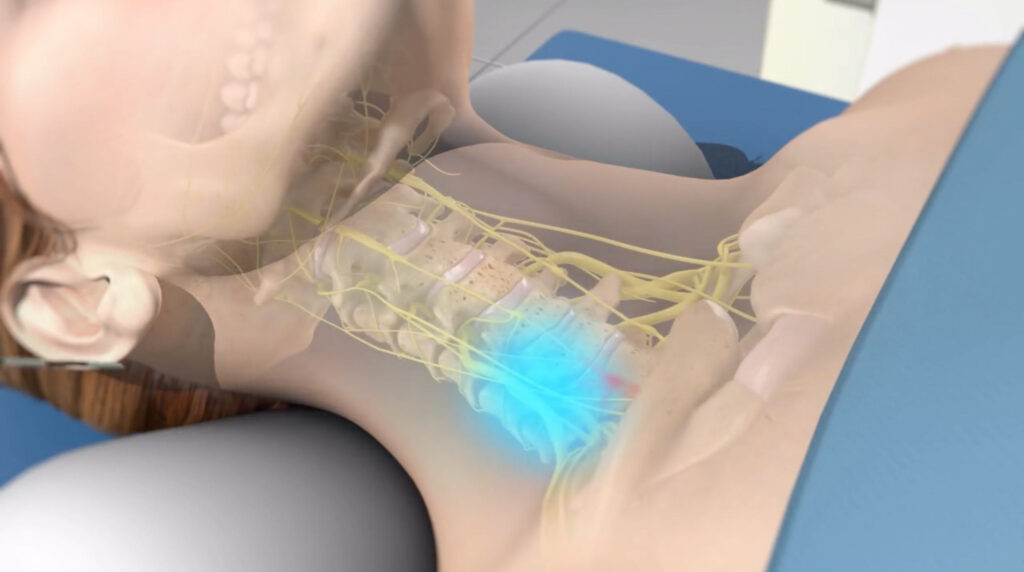Stellate Ganglion Block
A stellate ganglion block is a minimally invasive procedure used to treat nerve-related pain and dysregulation in the upper body. By targeting the stellate ganglion—a collection of nerves located in the front of the neck—this treatment can help reduce symptoms related to complex regional pain syndrome (CRPS), nerve injuries, poor circulation, or even post-traumatic stress disorder (PTSD). It works by calming the overactive sympathetic nervous system and improving blood flow and nerve function in the head, neck, and upper extremities.
This procedure is often considered when traditional pain treatments have failed or when a diagnostic tool is needed to assess the role of the sympathetic nervous system in a patient’s symptoms.

What is it?
A stellate ganglion block treats pain and sympathetically maintained pain conditions in the head, neck, upper arm, and upper chest. It’s also used for certain circulation problems and PTSD.
How is it performed?
Using ultrasound or fluoroscopic guidance, local anesthetic is injected near the stellate ganglion in the neck. The procedure takes about 20-30 minutes.
Keypoint #1-Lorem Ipsum
Lorem Ipsum mon fringilla dolor felis amet fusce.
• Libero auctor
• Enim molestie iaculis
• Massa bibendum
• Ultrices varius
Metus euismod tellus penatibus in ex morbi euismod mollis.
Phasellus venenatis augue luctus sollicitudin elementum suspendisse.
Treatment Benefits
Stellate ganglion blocks can offer relief from burning, tingling, or temperature-sensitive pain in the upper limbs or face. It can also improve circulation, reduce inflammation, and may help reset the autonomic nervous system response, especially in patients with PTSD or chronic stress conditions. The treatment is quick, repeatable, and often well tolerated with minimal recovery time.
Who Can Benefit From This Treatment
This procedure is commonly recommended for patients with CRPS, upper extremity nerve pain, post-herpetic neuralgia, or sympathetically maintained pain following trauma or surgery. It may also benefit individuals with vascular insufficiency or those seeking alternative treatments for PTSD. A thorough evaluation helps determine whether a stellate ganglion block is appropriate for your condition.
Learn more about Stellate Ganglion Block by contacting the Minimally Invasive Spine and Pain Institute—our team is here to help you explore your options.
Aftercare for Stellate Ganglion Block
After a stellate ganglion block, it’s common to experience temporary side effects such as drooping of the eyelid, a red or bloodshot eye, nasal congestion, or a warm sensation in the face or arm on the treated side. These are expected and typically resolve within a few hours. Most patients are monitored briefly after the procedure and can return home the same day. Pain relief may begin immediately or take a few days depending on your condition.
Tips for a Smooth Recovery
Follow these guidelines to support healing after a stellate ganglion block:
- Avoid strenuous activity for the rest of the day following the procedure
- Refrain from driving until any temporary vision or eyelid effects fully resolve
- Stay hydrated and eat light meals as tolerated
- Use ice packs if you experience mild neck soreness at the injection site
- Contact your provider if you experience difficulty breathing, chest pain, or symptoms lasting longer than expected

